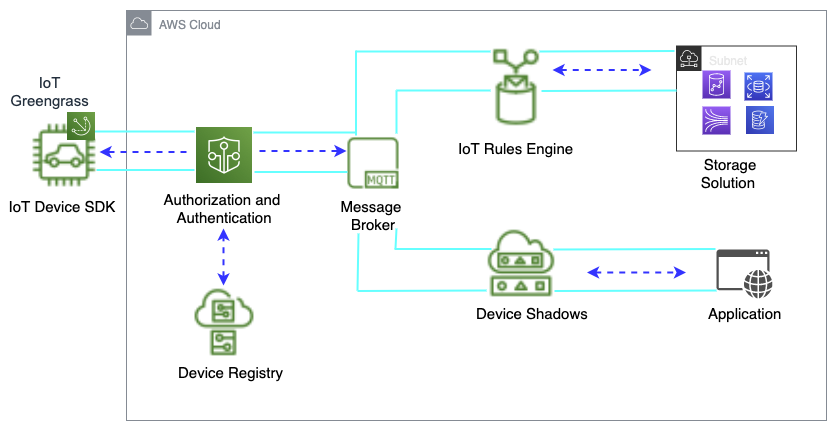IoT refers to a network ecosystem of physical devices that have an IP address and are connected to the internet. While IoT devices are growing rapidly in number, growing with them is the complexity of leveraging your IoT devices correctly. IoT helps organizations to perform a variety of tasks such as predictive maintenance, monitoring connected buildings and city systems, energy efficiency monitoring, and safeguarding manufacturing facilities, among others. You need to ingest data from IoT sensors, store them for analysis either via streaming data or stored data, and provide results quickly.
These are some of the most critical challenges to any IoT device architecture. You need to ensure the security and management of devices. Cloud providers have managed service offerings to achieve scalability to millions of devices. Let's look into AWS IoT offerings to understand the working of IoT systems. Because IoT solutions can be complex and multidimensional, you need to remove the complexity of implementing IoT in the business and help customers to securely connect any number of devices to the central server.
The AWS cloud helps in processing and acting upon device data and reading and setting device state at any time. AWS provides the infrastructure to scale as needed, so organizations can gain insight into their IoT data, build IoT applications and services that better serve their customers, and help move their businesses toward full IoT exploitation. The following diagram illustrates the components of AWS IoT:

The following are details in each IoT component and how are they connected as shown in the preceding diagram:
- IoT Greengrass: AWS IoT Greengrass is installed on edge devices and helps to send IoT message to the AWS cloud.
- The IoT Device SDK: The AWS IoT Device SDK helps to connect IoT devices to your application. The IoT Device SDK provides an API to connect and authenticate devices to application. It helps to exchange messages between device and AWS IoT cloud services using the MQTT or HTTP protocols. The IoT Device SDK supports C, Arduino, and JavaScript.
- Authentication and authorization: AWS IoT facilitates mutual authentication and encryption to exchange data with only authorized devices. AWS IoT uses authentication mechanisms such as SigV4 and X.509 certificates. You can attach authentication to all connected devices by attaching a certificate and handle authorization remotely.
- IoT message broker: The message broker supports the MQTT and HTTP protocols and establishes secure communication between IoT devices and cloud services such as the AWS IoT Rules Engine, Device Shadows, and other AWS services.
- The IoT Rules Engine: The IoT Rules Engine helps to setup managed data pipelines for IoT data processing and analytics. The Rules Engine looks at IoT data to perform streaming analytics and connect to other AWS storage services such as Amazon S3, DynamoDB, ElasticSearch, and so on.
- Device Shadow Service: Device Shadow Service helps you to maintain a device's status when it is offline due to loss of network connectivity in a remote area. As soon as the device comes online, it can resume its state from Device Shadow. Any application connected to the device can continue working by reading data from the shadow using a RESTful API.
- Device Registry: The Device Registry helps to identify IoT devices and helps to manage millions of devices at scale. The Registry stores device metadata such as the version, manufacturer, and reading method (Fahrenheit versus Celsius), and so on.
As of now, you've learned about various business analytics services that aim at answering questions about past events. But businesses also need to answer questions about the possibilities of future events, which is done using ML. Let's learn more details about ML.
